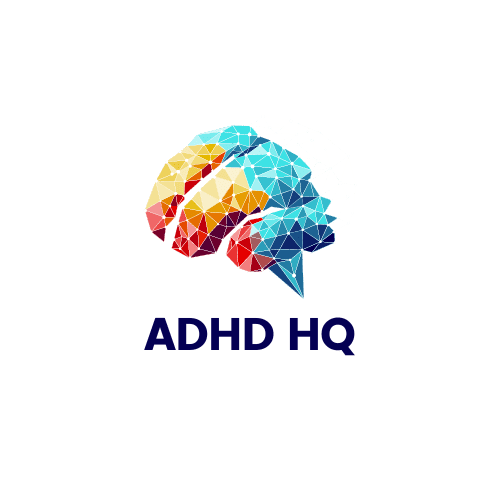Adhd Understimulation
Imagine a scenario where an individual with ADHD struggles to focus on a simple task, constantly seeking external stimulation to combat a feeling of restlessness.
This state of understimulation can have profound effects on daily functioning and overall well-being. Understanding how this understimulation presents itself and exploring effective coping mechanisms becomes essential in managing the complexities of ADHD control.
By addressing the underlying causes and implementing tailored strategies, individuals with ADHD can better regulate their focus and energy levels.
Key Takeaways
- Understimulation in ADHD impacts behavior, cognition, and dopamine pathways, leading to exhaustion and reduced motivation.
- Recognize signs like procrastination and seek stimulating activities to combat lack of engagement.
- Causes include low dopamine levels, easy tasks, and insufficient mental or sensory stimulation, requiring higher engagement levels.
- Coping involves engaging in stimulating activities, using fidget toys, introducing novelty, and setting time limits to maintain focus.
Impact of Understimulation on ADHD

In individuals with ADHD, understimulation greatly influences various aspects of behavior and cognitive functioning. The brain's reward system, particularly the dopamine pathways, plays a pivotal role in regulating attention, motivation, and behavior in individuals with ADHD. When there's a lack of sufficient stimulation, such as in tasks that are monotonous or not challenging enough, the dopamine reward response is diminished. This can lead to feelings of exhaustion, lack of motivation, impatience, and difficulty staying engaged in activities that don't provide adequate sensory input.
Furthermore, understimulation in ADHD can result in body-focused repetitive behaviors as individuals seek additional stimulation to compensate for the lack of sensory input. This compensatory behavior can manifest as fidgeting, tapping, or other repetitive actions that provide a temporary increase in stimulation. In daily activities, the impact of understimulation can impair focus, attention, and productivity, making it challenging to sustain engagement in tasks that don't offer the right level of positive stimulation.
Addressing understimulation in ADHD involves identifying activities that provide the best level of sensory input to enhance engagement and motivation.
Recognizing Signs of Understimulation

Recognizing signs of understimulation in individuals with ADHD is imperative for early intervention and effective management of cognitive functioning. Understanding how ADHD brains need sufficient levels of stimulation is essential in identifying when individuals may be feeling understimulated. Here are three key indicators to look out for:
- ADHDers often procrastinate: Individuals with ADHD may delay starting tasks that don't offer immediate rewards or fail to provide the necessary level of stimulation. This procrastination can stem from a sense of underwhelm when faced with uninteresting activities.
- Find something challenging: People with ADHD often thrive when engaged in activities that challenge their cognitive abilities and provide a suitable level of stimulation. They may actively seek out tasks that offer novelty and complexity to prevent feelings of understimulation.
- Seek sources of stimulation: Those experiencing understimulation may exhibit behaviors aimed at seeking out additional sources of stimulation. This could manifest as a constant need for new activities or frequent changes in routines to maintain engagement and interest.
Causes of Understimulation in ADHD

Engaging in activities lacking immediate rewards can lead to understimulation in individuals with ADHD. People with ADHD often find that their brains struggle to maintain focus and interest when tasks don't offer immediate gratification or stimulation. This is due to a lower level of dopamine in the brain, which plays a critical role in attention and motivation.
When faced with tasks that are too easy, routine, or repetitive, individuals with ADHD may experience a sense of underwhelm and disengagement. The need for increased stimulation is a common characteristic of understimulation in ADHD, as these individuals may require more exciting or challenging activities to maintain interest and focus.
Tasks that don't provide enough mental or sensory stimulation can lead to feelings of boredom and restlessness, making it difficult for individuals with ADHD to stay engaged. In contrast, when presented with something fun or novel, individuals with ADHD may thrive and excel, as their brains are more responsive to new and exciting experiences, helping them avoid sensory overload.
Coping Strategies for Understimulation

To effectively address understimulation in individuals with ADHD, implementing strategic coping mechanisms is essential. Here are three key coping strategies that can help manage understimulation in ADHD:
- Engage in Stimulating Activities: Participating in activities that provide positive sensory input can help combat understimulation. This can include activities such as sports, art, music, or any hobby that excites the senses.
- Utilize Fidget Toys: Using fidget toys or tools can increase sensory stimulation and help individuals maintain focus on tasks. These tools provide a tactile experience that can be beneficial in keeping the mind engaged.
- Rotate Tasks and Introduce Novelty: Setting time limits for tasks and rotating between different activities can introduce novelty and prevent boredom in understimulating situations. This approach can keep the brain actively involved and prevent monotony.
Balancing Understimulation in ADHD

Understimulation in ADHD necessitates a strategic approach to maintaining the best engagement levels for individuals with the condition.
The brains of individuals with ADHD often require higher levels of stimulation to stay focused and avoid feelings of exhaustion and impatience.
Balancing understimulation involves incorporating activities that provide a level of novelty and interest to keep the individual engaged. For example, playing video games can offer the necessary stimulation due to their interactive and fast-paced nature.
Additionally, using fidget toys can help channel excess energy and improve focus during less stimulating tasks. Setting time limits for activities can also prevent boredom and maintain interest levels.
In cases where self-management techniques are insufficient, seeking professional help or therapy can provide valuable support in coping with understimulation in ADHD. By actively seeking out stimulating activities and utilizing coping mechanisms, individuals with ADHD can better manage their symptoms and improve their overall engagement levels.
Frequently Asked Questions
What Does It Feel Like to Be Understimulated Adhd?
Feeling overwhelmed, unproductive, restless, and unmotivated can reflect being understimulated with ADHD. Disengaged, distracted, frustrated, and unfocused, I often find myself irritable, fatigued, impulsive, and reckless, struggling with being disorganized, scattered, uninspired, and uninterested.
What Does ADHD Boredom Feel Like?
ADHD boredom feels like frustrating restlessness, constant distraction, and unfulfilled potential. It's boredom overload leading to creative stagnation, endless daydreaming, energy depletion, and mind-numbing monotony. Managing daily tasks becomes challenging, impacting focus and motivation.
Do People With ADHD Need Stimulation?
I need stimulation to keep my brain engaged. My attention challenges require active strategies. Activity levels impact my focus. Sensory input is vital for cognitive function. Behavioral responses improve with proper stimulation techniques.
How Do You Decompress With Adhd?
To decompress with ADHD, I engage in mindful meditation, creative outlets, physical exercise, nature walks, relaxation techniques, sensory activities, music therapy, and breathing exercises. These methods help regulate stimulation levels and promote mental relaxation.
Conclusion
To sum up, it's important to recognize the impact of understimulation on individuals with ADHD.
One interesting statistic to note is that research shows that up to 75% of adults with ADHD experience symptoms of understimulation.
By understanding the signs, causes, and coping strategies for understimulation, we can better support those with ADHD in managing their symptoms and improving their overall quality of life.







